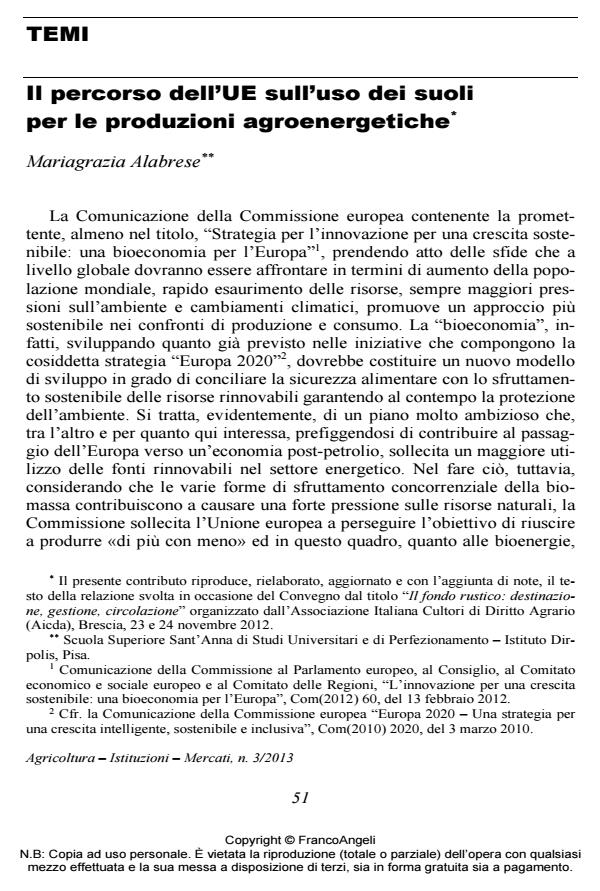The EU progresses in land use for energy production
Journal title AGRICOLTURA ISTITUZIONI MERCATI
Author/s Mariagrazia Alabrese
Publishing Year 2015 Issue 2013/3
Language Italian Pages 16 P. 51-66 File size 70 KB
DOI 10.3280/AIM2013-003004
DOI is like a bar code for intellectual property: to have more infomation
click here
Below, you can see the article first page
If you want to buy this article in PDF format, you can do it, following the instructions to buy download credits

FrancoAngeli is member of Publishers International Linking Association, Inc (PILA), a not-for-profit association which run the CrossRef service enabling links to and from online scholarly content.
The European Bioeconomy Strategy, developing what is to be provided by some flagship initiatives within the “Europe 2020” Strategy, aims to pave the way to a more resource efficient society, reconciling food security with the sustainable use of renewable resources, while ensuring environmental protection. This ambitious plan aims to free Europe from oil dependency and demands a wider use of renewable sources in the energy sector. Moreover, as competing uses of biomass now place natural resources under severe pressure, renewable energies should be generated by agricultural and forestry residues and wastes. In this regard, the recent proposal (amending directives relating to the quality of petrol and diesel fuels and directives on the promotion of the use of energy from renewable sources) introduces measures which favor the so-called “advanced biofuels”. The article tries to describe the main steps of the course of action that has brought the EU to give even more attention to the land use issues for those lands devoted to grow feedstock. However, from the last documents issued by the EU it seems that things are changing, in particular in the sphere of biofuels. .
Keywords: Agroenergy, Land Use, Climate Change
Mariagrazia Alabrese, Il percorso dell’UE sull’uso dei suoli per le produzioni agroenergetiche in "AGRICOLTURA ISTITUZIONI MERCATI " 3/2013, pp 51-66, DOI: 10.3280/AIM2013-003004